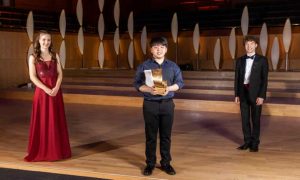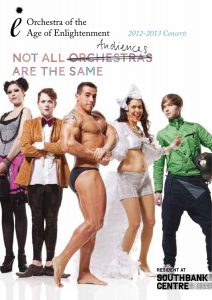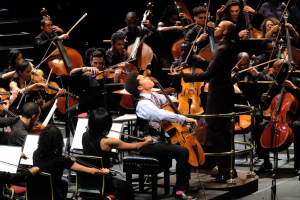This post is written by Dr. Anna Bull.
As I have argued in my book Class, Control, and Classical Music, as well as more recent work (Bull, 2021), one of the ways in which classical music indexes a valued identity is by signifying middle-class respectability for women. Beverley Skeggs theorises the concept of respectability in her ethnographic study of working-class women in the north of England. [1]. ‘Respectability’ refers to ways that these working-class women would dress, act, and speak in order to avoid being stigmatised as working-class, and therefore as worthless. Simply put, for the women in her study, respectability was a signifier of not being working-class. There is an historical lineage to this concept, from the nineteenth century. As Nead’s study of the discourse of art in nineteenth century England describes, ‘class coherence [for the middle class] was established through the formation of shared notions of morality and respectability’.[2] Within such notions of morality, a woman’s ‘sexual identity determined whether or not she was seen as a respectable and responsible member of society’.[3] Respectability is therefore a way in which the value or worth of women in relation to their class position is read through their perceived sexuality. Respectability is also a racialised identity, as can be illustrated through outlining its links with British imperialism.[4]
I have argued that historical and contemporary associations and representations of the identity of ‘classical musician’ in the UK signify ‘respectability’. Both in classical music’s iconography and in classical musicians’ modes of dress – both everyday and formal concert wear –a style associated with respectability (for young women) or elitism (for young men) can be seen, for example in the recent final of the BBC Young Musician of the Year awards.

This concept contributes towards explaining the inequalities of participation in classical music. Young people self-select into learning genres of music associated with an identity that fits their social position. In other words, young people will invest in learning kinds of music where there is a social scene that they fit into or feel comfortable in, where they gain social approval, and where they can cultivate an expressive voice they value.[5] For middle-class girls and young women, a ‘respectable’ identity is seen as valuable, and therefore learning classical music is an acceptable, even an obvious pathway. Similarly, Mari Yoshihara has also pointed out the ongoing associations of classical music proficiency with being a ‘good girl’ and a ‘virtuous young woman’.[6] At the same time, this classed, raced and gendered identity associated with classical music makes it a less attractive option for working-class children and young people, as well as those from some minoritized racial groups (both male and female).
Focusing on the ‘respectability’ performed in the dress and demeanour of classical musicians – and their representations in the media – makes visible the values and identities that are normalised within classical music education and practice. By drawing on an historical understanding of respectability that foregrounds the role of white women’s embodied sexual propriety as upholding wider standards of morality, the whiteness of the ‘nice girl’ playing classical music becomes visible. This fits with findings from wider studies of the engagement of racialised minorities with classical music.[7] The racialised, classed and gendered legacy of classical music – visible in its iconography and classical musicians’ ‘style’ – shapes the ways in which it is encountered by Black middle-class people, East Asian classical musicians, and other racialised groups who are minoritised in the UK. [8]
—
Adapted from: Bull, A., 2021. La « respectabilité » et la musique classique. Étudier les intersections de classe, de genre et de race pour comprendre les inégalités dans les formations musicales. Agone 65, 43–64. https://agone.org/livres/9782748904345/agone65
English language version available to download here: https://annabullresearch.wordpress.com/research/
Bull, A. 2021. ‘Respectability’ and classical music: Examining the intersections of class, gender and race to understand inequalities in musical training. Agone 65, 43-64.
Notes
[1] Beverley Skeggs, Formations of Class & Gender: Becoming Respectable, London: SAGE, 1997, p. 47.
[2] Lynda Nead, Myths of Sexuality: Representations of Women in Victorian Britain, Oxford: Basil Blackwell, 1988, p.5.
[3] Nead, p.6.
[4] Anne McClintock, Imperial Leather: Race, Gender, and Sexuality in the Colonial Conquest, New York: Routledge, 1995, p. 15.
[5] See further discussions of this issue in literature on music education and young people’s identities, such as David J. Hargreaves and Nigel A. Marshall, ‘Developing Identities in Music Education’, Music Education Research 5, no. 3 (November 2003): 263–73, https://doi.org/10.1080/1461380032000126355; Alexandra Lamont et al., ‘Young People’s Music in and out of School’, British Journal of Music Education 20, no. 03 (2003): 229–41, https://doi.org/10.1017/S0265051703005412.
[6] Mari Yoshihara. Musicians from a Different Shore, Philadelphia: Temple University Press (2008). p.106.
[7] Meghji, ‘Encoding and Decoding Black and White Cultural Capitals’; Vincent et al., ‘Raising Middle-Class Black Children’.
[8] Yoshihara, Musicians from a Different Shore; Mina Yang, ‘East Meets West in the Concert Hall: Asians and Classical Music in the Century of Imperialism, Post-Colonialism, and Multiculturalism’, Asian Music 38, no. 1 (13 June 2007): 1–30, https://doi.org/10.1353/amu.2007.0025.
Dr. Anna Bull is Senior Lecturer in sociology at the University of Portsmouth.


 Eleanor Shaw defines marketing strategy as ‘an organisational approach that is organised around the consumer, with a keen focus on identifying customer needs, wants and demands and matching these to features and benefits of the products contained within an organisation’s portfolio.’ (Shaw 2012:321). How well do we as classical musicians manage this process, bearing in mind the constraints indicated above?
Eleanor Shaw defines marketing strategy as ‘an organisational approach that is organised around the consumer, with a keen focus on identifying customer needs, wants and demands and matching these to features and benefits of the products contained within an organisation’s portfolio.’ (Shaw 2012:321). How well do we as classical musicians manage this process, bearing in mind the constraints indicated above?




